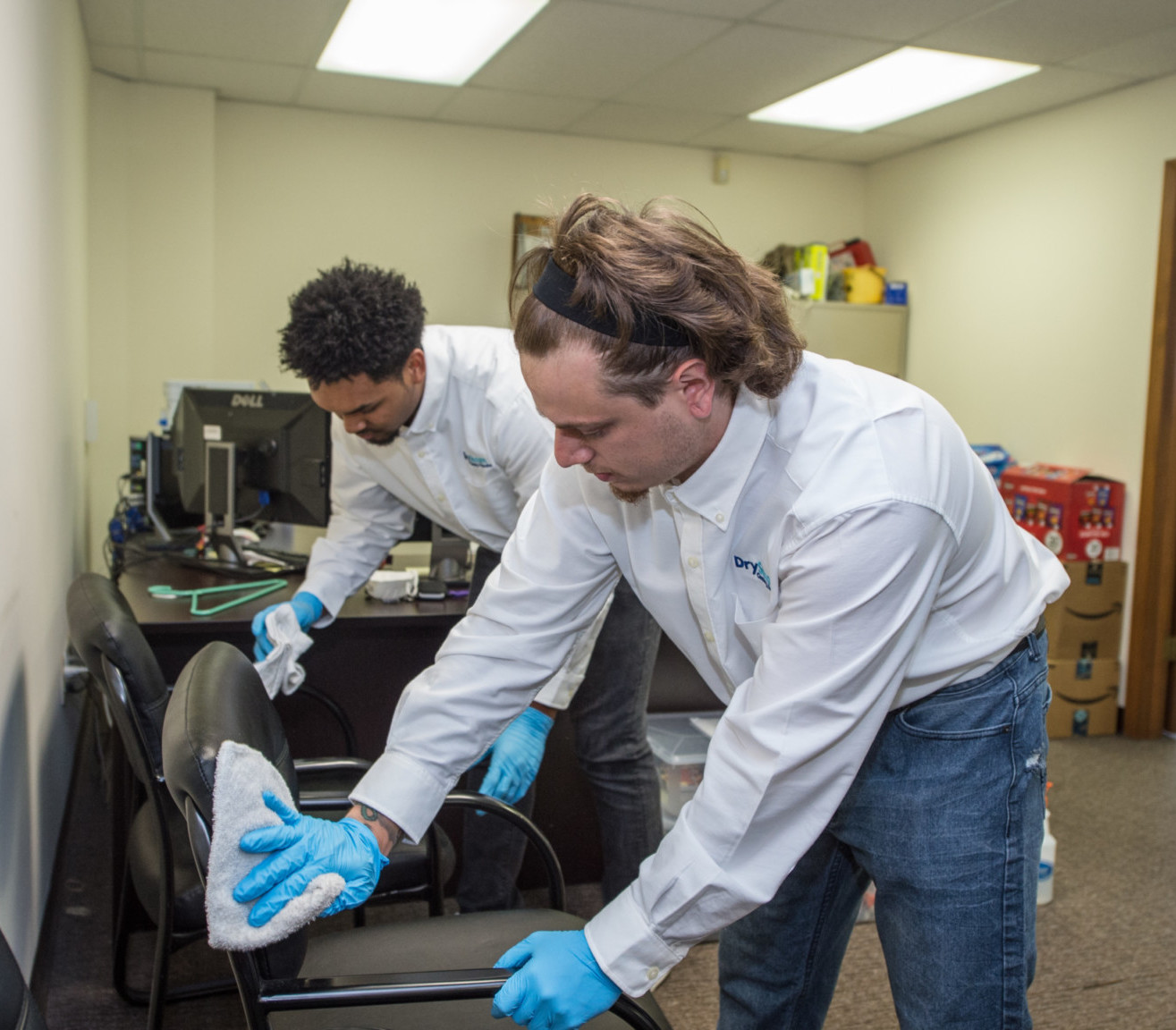Often the battle against germs seems never-ending. Bacteria and viruses are so tiny, and they seem to be everywhere. But you have a powerful way to defeat these microscopic germs: sanitizing. Sanitizing is a combination of cleaning and disinfecting. By regularly sanitizing your home and office, you will be taking a huge step to destroy and remove bacteria and viruses.
Bacteria and viruses can remain active on surfaces up to 72 hours or longer (sometimes more than a week). While hard surfaces like metal and plastic are especially attractive to bacteria and viruses, germs can also linger on cloth and fabric, such as chairs, window coverings, and carpets.
High-touch surfaces, such as doorknobs, counter tops, drawer handles, and faucet knobs may allow you to pick up germs on your skin. If you then touch your face, you may be placing those germs within easy access of your respiratory system. Germs on the floor and furniture may linger, waiting to hop a ride and work their way into your breathing. You will have much more peace of mind if you keep your living and work areas sanitized.
How Does Sanitizing Remove and Kill Germs?
There are two steps to sanitizing: cleaning and disinfecting. By themselves, cleaning and disinfecting are powerful. Together, they pack a one-two punch. That’s the mega-power of sanitizing.
In the cleaning process, soap removes germs from surfaces. Picture each soap molecule, with one side that attaches to water and the other that repels and pushes the germs toward the water. This works beautifully in cleaning up bacteria, dirt, and viruses. The soap can surround germs and the dirt that carries them, and then send them away in the water, removing them from the surfaces you are cleaning. In some cases the soap can start to break up the structure of the germs as well. This is all good news for removing bacteria and viruses from high-touch, high-traffic surfaces through cleaning.
But cleaning alone doesn’t kill bacteria or viruses, and it doesn’t remove every germ. To get at the germs that weren’t removed by soap, and to destroy the bacteria and viruses, you need to disinfect those surfaces after cleaning. That’s why the one-two process of sanitizing works so well. Cleaning clears out many of the germs and the dirt they cling to, which means your disinfecting will go a lot further to tackle the remaining bacteria and viruses.
EPA-Registered Disinfectants
What are the best disinfectants to destroy bacteria and viruses? The Environmental Protection Agency (EPA) provides a list of EPA-registered disinfectants that play a powerful role in sanitizing your home and workplace. These EPA-registered disinfectants have been tested against difficult strains of viruses, including strains that are harder to destroy than the SARS-CoV-2 coronavirus: https://www.epa.gov/pesticide-registration/list-n-disinfectants-use-against-sars-cov-2.
The EPA list shows you the active ingredient of each disinfectant, what types of surfaces are applicable, which products are designated for use in residences, businesses, or healthcare facilities, and the number of minutes needed for the disinfectant to treat a surface.
The benefit of using EPA-registered products is that they will be the strongest, most effective, yet safest products to ensure a healthy living and work space. EPA-registered disinfectants meet EPA criteria for sanitizing against the SARS-CoV-2 coronavirus and other viruses and bacteria.
How Are Viruses Destroyed?
When you use the powerful sanitizing combo of cleaning and disinfecting, what happens to viruses?
A virus (like the SARS-CoV-2 coronavirus, or the flu, or viruses that cause the common cold) is a microbe, smaller then bacteria. It searches for host cells (inside human or animal bodies) to reproduce itself. Without access to host cells, the virus cannot reproduce.
A virus is made up of DNA or RNA with a protein coating. It finds a specific place to attach to certain cells in the body. These may be respiratory, digestive, or immune cells depending on the type of virus. The virus then uses the cells’ life processes to reproduce and release more viruses. It turns the host cells into virus-making machines.
The good news is that viruses can be destroyed. This is why complete sanitizing is so important. Remember, it’s the protein coating surrounding the virus that enables it to attach to a host cell and reproduce. Destroy the protein coating, and you neutralize the virus. Scrubbing with soap begins to tear apart the virus. Then you apply disinfectants to destroy the protein coating, and dispose of the neutralized virus with your cleaning water.
Sanitizing is a strong defense against viruses and other germs to keep a healthy home and business environment. By making sanitizing a regular part of your home and work life, you will have peace of mind that you are taking a big step to neutralize and destroy germs, including bacteria and viruses.
For more information on our disinfection services check out: https://www.thedrysteam.com/disinfection-services/


Leave A Comment